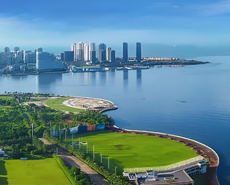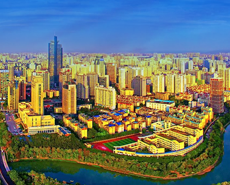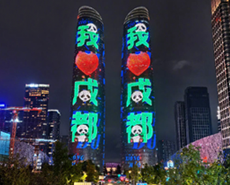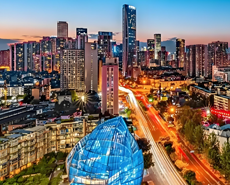
Recycling lithium from used batteries still has a long way to go
----Interview with Qunxuan Yan
General Manager
Hunan Keyking Recycling Technology Limited
General Manager
Hunan Keyking Recycling Technology Limited
Formed in 2016, Hunan Keyking Recycling Technology Co., Ltd. was one of the first companies in China recycling lithium from used batteries. With a land area of 300 Mu, the company has main businesses including recycling of LFP batteries and LNCMO batteries, as well as production of battery-grade lithium carbonate out of Li-contained waste with a designed production capacity of 5,000t. Its processing capacity of Li-contained waste is one of the largest of its kind in China.
Asian Metal: Thanks for taking our interview. Would you please give a brief introduction on your current main businesses and operation status at first?
Mr. Yan: Our company was formed in 2016 and has a land area of 300 Mu. We have three main businesses. First is production of battery-grade lithium carbonate out of Li-contained waste such as coarse lithium carbonate, lithium fluoride, lithium phosphate and lithium chloride, and raw materials usually come from chemical, military and Li-battery industries. Second is recycling of lithium from used LFP batteries installed in NEV vehicles. Third is recycling of lithium from used LNCMO batteries. Our existing annual production capacity of battery-grade lithium carbonate out of Li-contained waste is 5,000t, and monthly processing capacity of used LNCMO powder and used LFP powder is around 3 million tons and 5 million tons respectively.


Asian Metal: We learned that your company is one of the few and also the earliest corporations in China using used batteries as raw materials to produce lithium. Would you please tell us what are your advantages in resources supply and production technology?
Mr. Yan: Our core technical team was formed earlier than the company. In 2014 our team began to conduct research on and construction of pilot Li-recycling facilities. At that time there were nearly no companies or individuals in China involved in lithium recycling industry. Based upon technical experience of the team, we formed Hunan Keyking Recycling Technology Co., Ltd. Our company is now among the top ones in terms of the recycling capacity of Li-contained waste in China. Our raw materials consist of a quite broad range of varieties. They can be used batteries, or waste from pharmaceutical catalyst and military industries, or lithium phosphate or coarse lithium carbonate produced by nickel or cobalt recycling companies. We can say that any waste containing lithium can be raw materials for us. As for resources supply, around 20% of our consumption is supplied by the company itself and the rest is purchased from the market. With new production lines to be built in the future, the self-supply proportion is expected to increase to 30-40%.
Asian Metal: Would you please share with us your major techniques used in recycling lithium from used battery?
Mr. Yan: Battery recycling technology is traditional. Batteries are first dismantled and separated into aluminum, copper and battery powder, and then cathode plates are processed into powder. Now in China there are two major methods of recycling lithium from used batteries. The first one is usually adopted by companies which, having nickel and cobalt recycling as their main businesses, extract nickel, cobalt and manganese first with lithium left over in the extraction solutions. Such solutions have low lithium content but high sodium sulfate content. Lithium recovered via this method can only be produced into coarse lithium phosphate or coarse lithium carbonate, and then deep processed into industrial grade lithium carbonate which has comparatively lower qualities. The other method is that lithium is first recovered from cathode powder, with nickel, cobalt and manganese to be separated afterwards. Our company adopts the second method. Solutions with lithium first separated and released into them contain no other chemicals and impurities, and therefore are quite clean, able to be directly produced further into battery grade lithium carbonate.


Asian Metal: Time is needed for a market to grow mature. Since recycling of lithium from used battery started not very long ago, some downstream clients do not have enough confidence in it or try to keep their purchase prices at quite low levels. Are there any differences between lithium carbonate produced out of waste and lithium carbonate produced out of natural ores in their downstream applications?
Mr. Yan: Lithium waste has much higher lithium contents than ores. Lithium content of LNCMO waste commonly seen on the market is over 5%, while spodumene's lithium content, in the form of LiO, is 5-6%, equivalent to only 2-3% lithium content in reality, with lithium content in lepidolite further down to 1.3-1.8%. In comparison, lithium content of waste is much higher. Higher lithium content of raw materials, higher purities and theoretically better qualities of their products. But as the waste-based lithium production industry started not long ago, there are quite great technical gaps between different companies, which is why downstream consumers have doubts about their product qualities. Currently in China, many companies actually keep nickel and cobalt recycling as their main businesses. In order to maximize their profit margins, these companies at the early stage of their history also produced and sold coarse lithium salts, and with more equipment in operation, they also begin to produce purified lithium carbonate. But restricted by insufficient lithium carbonate production experience and limited production scale, their investments into production facilities are comparatively small, so their lithium carbonate products usually have lower qualities and purities. In sum, to gain broad market recognition requires long-time technical accumulation. Thanks to long-time technical accumulation, our company has successively produced products with stable quality and also gained consistent acknowledgement from downstream clients.
Asian Metal: With the quantity of used Li-batteries increasing, more people attach importance to the issue of battery recycling. But now in China there are still two major technical routes in lithium production, including production out of ores and out of salt lake brine resources. What do you think are the main obstacles restricting development of the waste-based production route?
Mr. Yan: I think there are three main obstacles. The first one is imbalance between unstable collection of lithium waste and scale production capacity. Take our company as an example. We have an annual production capacity of 5,000t, but restricted by unstable raw material supply, our regular monthly output is only 200t to 300t. The second issue is that, unlike the spodumene-based route with wide applications, waste-based production companies have gaps in their technical stability and maturity. The last issue is that recycling companies mainly focus on nickel/cobalt recycling with lithium as a by-product. Their investment into lithium production is limited and their management pays little attention, so their lithium products have relatively great differences in quality.


Asian Metal: What is your anticipation on development trends of the waste-based lithium production industry in the coming three years?
Mr. Yan: In the coming three years, with battery usage and scrappage quantity increasing, waste-based technical route will have the chance to have its proportion increasing gradually, but the growth rate depends upon battery scrappage quantity, so time is still needed for the waste-based industry. Ore-based technical route will still be the mainstay route for lithium production in the coming three years.
















